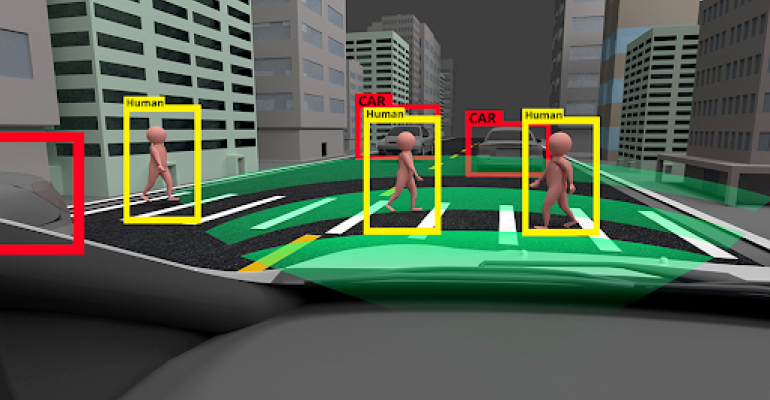When we talk about the automotive world’s hurdles, the usual suspects – sky-high interest rates, pesky inflation, supply chain hiccups and the ongoing talent hunt – always steal the spotlight. But here’s the plot twist: Electrification and softwarization are the real game changers that will shape the future of the automotive industry.
Automakers have risen to the challenge, especially in the electric department. Name a model, and chances are good that a hybrid option is either available or in the works, and customers have been taking notice. In 2022, 8% of all new cars purchased in the U.S. were electric. The numbers are even higher globally, with electric models making up 14% of new-car sales in 2022.
Softwarization has been a hurdle because of how automakers view themselves. Legacy automakers have a rich history of innovating hardware. But software – and its use instead of traditional hardware to perform a given function – isn’t necessarily in their DNA. The learning curve with software implementation and monetization is steep.
Luckily, more automakers have been up to the task. Artificial intelligence already is used in design and planning. The same can be said for production, driver assistance, warranty management, risk assessment and customer service, to name only a few. In fact, the amount of money auto manufacturers have been sinking into AI is expected to grow at a compound annual growth rate of 22.7% from 2023 to 2030.
Deploying Generative AI at Scale
At least some of these funds will have been earmarked for exploring generative AI. It’s already proven to drive productivity, nurture creativity, enhance decision-making and deliver new business for nearly every industry, including automotive. Tesla uses AI at fleet scale to increase the rate of innovations. In June, the company announced plans to use state-of-the-art generative modeling techniques across multiple camera views to predict possible outcomes.
Tesla isn’t alone in its efforts. In China, passenger vehicles equipped with combined driver assistance accounted for 42.4% of all passenger vehicle sales in the first half of 2023. More importantly, the country’s automakers have been applying AI foundation models to correct many issues with autonomous driving, and they’ve made a great deal of headway. As of this past June, Chinese tech company Baidu’s Apollo Go autonomous-vehicle fleet had supplied more than 3.3 million services to the public.
The potential of generative AI isn’t lost on China, and Chinese automakers are poised to take the technology further and faster than the competition. Most, if not all, operating in the space have the technology base and engineering talent to unleash incredible results in this arena. Automakers leveraging softwarization for design and manufacturing can deliver greater value and affordability throughout the vehicle’s lifecycle.
Overcoming the Obstacles of AI
For some automakers, hardware is an obstacle to using generative AI to its fullest. Most cars roll out of the factory with just enough computing power to handle the basics, which prevents them from running a software sandbox in every vehicle driven off the lot. All that performance data is then lost – data essential to developing and testing new functions in the real world. It’s like missing out on a treasure trove of information that could supercharge innovation and speed up new features while keeping risks low.
With greater computing and generative AI, automakers can analyze driving behavior and personalize and perfect the overall driving experience for whoever is behind the wheel. Data has long held the promise of personalization, so there’s no reason why a new car can’t become more attuned to the buyer as they get used to their new car. It’s all a matter of technology, and it could be a persuasive selling proposition.
 On top of that, vehicle-specific data is critical to better customer support. With a few clicks of a button, service representatives can pull up details on the driving experience and precisely understand what customers may be facing with their vehicles. Talk about being responsive to an individual’s needs. Then, should an automaker choose, it could send customized messaging via text, email or right to the vehicle’s display screen. That’s not out of the realm of possibility.
On top of that, vehicle-specific data is critical to better customer support. With a few clicks of a button, service representatives can pull up details on the driving experience and precisely understand what customers may be facing with their vehicles. Talk about being responsive to an individual’s needs. Then, should an automaker choose, it could send customized messaging via text, email or right to the vehicle’s display screen. That’s not out of the realm of possibility.
Much like electrification, softwarization is the future of the automotive industry. Today’s vehicles are getting closer to becoming computers on wheels as connectivity becomes core to the driving experience. It’s only a matter of time before customers will expect the functionalities AI provides in every vehicle – not just autonomous driving features but all the bells and whistles. The first challenge many automakers will have to overcome is how they view themselves. From there, it’s open roads ahead.
Thomas Mueller (pictured, above left), a vice president at Wipro Engineering Edge, is responsible for Wipro’s engineering and innovation services, which encompass software-defined vehicles, autonomous driving, 5G and cloud-native engineering.





